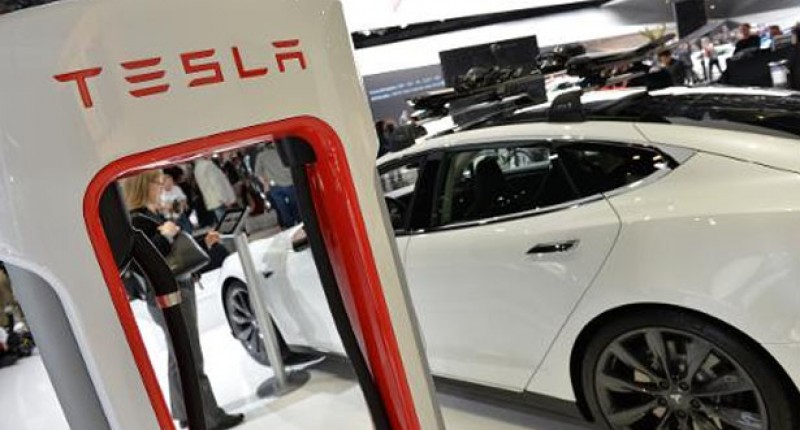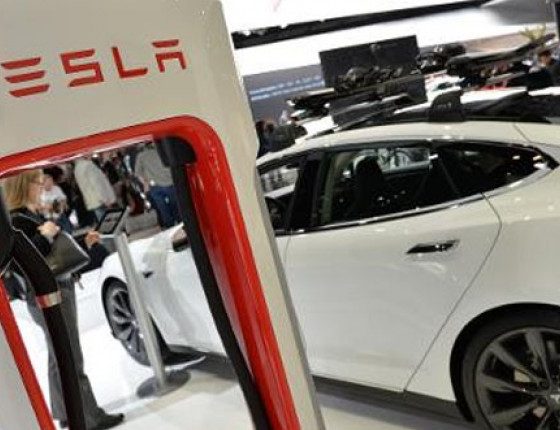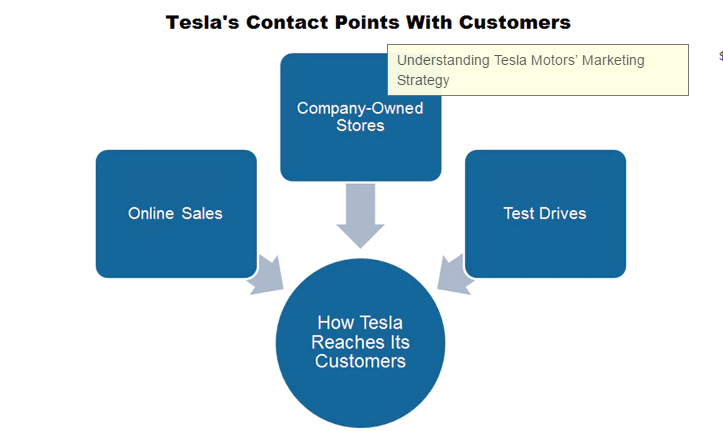

Lifestyle
How Tesla’s new age marketing builds overall consumer EV awareness
2016 was a year in which the Tesla Model X was cited as the ‘most significant’ vehicle, by growth contribution to total electric and plug-in hybrid sales in the U.S. It was also a year in which a survey of 2500 consumers illuminated how many Americans still feel uniformed about electric vehicles (EV).
However, Tesla’s innovative marketing strategy has just the right elements to enhance consumer background knowledge about what electric EVs are and how they work. In doing so, Tesla marketing will work reciprocally to place the Tesla brand at the forefront of the electric car industry. And it has the capacity to do so very quickly, if 2016 Tesla production numbers are any indicator.
How do Tesla sales differ from traditional car sales?
For most shoppers, the process of buying a car is essentially the same as it was a generation ago. Since long-established state franchise laws largely prohibit direct sales by auto manufacturers, an intermediary called a franchised dealer works as liaison between the manufacturer and the consumer. “The internet has dramatically changed the car-buying experience, but not the role of the dealer,” Maryann Keller & Associates wrote in a 2014 study for the National Automobile Dealers Association.
The Tesla buying experience is quite different. According to Tesla CEO Elon Musk, “Existing franchise dealers have a fundamental conflict of interest between selling gasoline cars, which constitute the vast majority of their business, and selling the new technology of electric cars.” There are no Tesla dealers, commissioned sales people, or aggressive sales pitches. The price is non-negotiable, as the Tesla is built according to a series of customer self-select options. Tesla transactions are conducted online.
How do consumers learn about the Tesla brand if there is no traditional advertising?
Tesla offers a completely different marketing experience than does a traditional car dealership advertising campaign. With an emphasis on marketing over advertising, the Tesla brand is slowly becoming a household word. How does it do that?
It’s a movement, not just another car: Tesla Motors created a movement around its innovative products and its mission, and the brand is equally as inspiring with its marketing. With a disdain for paid advertising, Tesla Motors is leading the trend of reaching new customers through existing ones.
Media matters: Want to know the most recent Tesla profitability updates? Tune into a streamed invitation-only press conference. Care to learn about the newest features of Tesla engineering? Watch on YouTube as Tesla CEO Elon Musk’s vision for the future comes to life. Want to find reviews, and awards for Tesla cars? They’re all online, of course with corresponding Tesla media analysis and positioning. And throughout every single media event, regardless of its topic or source, the company’s primary message resonates: The folks at Tesla are trying to build the best car ever made, not just the best electric car, and revolutionize the energy industry. That message, in turn, is reproduced by the media and becomes part of a common public discourse.

(Source: Tesla)
Online information portal: Since people begin their journeys with Tesla on their website, Tesla has designed their online presence to be a balance of information, commerce, community, press releases, consumer updates, and connections to other business within the Tesla network.
Forums and user community: Central to the Tesla online experience is something as old as language itself: the story. Tesla brings to light the joy of belonging to the Tesla buying and ownership experience through giving its current clientele the tools to share their experiences. As it’s a public community, forums provide a lot of content and context about what it’s like to own and experience a Tesla, and prospective buyers can live vicariously through these storied Tesla experiences. These forums demonstrate how Tesla encourages owners to interact with the company, and such transparency is confidence-inspiring for the originally EV wary consumer.
Referral program: Tesla has one of the world’s most acclaimed refer-a-friend programs, which reflects the view that customers acquired through advocate referral programs spend more, are more loyal, and are more likely to refer their friends to the brand.
Distribution strategy: The Tesla retail outlet is distinct from any other car sales showroom. This is because, according to Tesla CEO Elon Musk, Our technology is different, our car is different, and, as a result, our stores are intentionally different.” The physical stores serve only as displays and sometimes only galleries, due in part because in several states Tesla is not allowed to sell vehicles through its stores. These stores are carefully curated and visually appealing channels to promote the Tesla EV vehicles and help to solidify the Tesla brand in the consumer mind.
Destination charging: Tesla partners with frequently visited places such as restaurants, resorts, and shopping malls so Tesla owners can recharge their vehicle while engaging in retail activities. These charging sites are centrally located, well-lit and signed, and placed strategically for high visibility. Individuals with no prior knowledge of the Tesla brand get to see one up close and personal while they grab their groceries, offering a personal glimpse into a once-rare EV charging session.
Supercharger network: Indeed, the Supercharger network is an ecosystem unto itself and of a proprietary nature that ensures its customers will always have a safe haven to alleviate range anxiety.
Conclusion
With so many constituents worldwide pursuing advanced vehicle technologies that aim to reduce the consumption of petroleum in the forms of gasoline and diesel, consumer awareness and comfort with EVs is essential. Tesla’s marketing approaches, which are so dissimilar from the distasteful traditional car dealership model, appeals to today’s 21st century IT populace and can assist to reduce barriers to and enhance opportunities for a broader acceptance of new technologies, such as EVs in general.

Lifestyle
Tesla Model S Plaid battles China’s 1500 hp monster Nurburgring monster, with surprising results
There is just something about Tesla’s tuning and refinement that makes raw specs seem not as game-changing.

The Tesla Model S Plaid has been around for some time. Today, it is no longer the world’s quickest four-door electric sedan, nor is it the most powerful. As per a recent video from motoring YouTube channel Carwow, however, it seems like the Model S Plaid is still more than a match for some of its newer and more powerful rivals.
The monster from China
The Xiaomi SU7 Ultra is nothing short of a monster. Just like the Model S Plaid, it features three motors. It also has 1,548 hp and 1,770 Nm of torque. It’s All Wheel Drive and weighs a hefty 2,360 kg. The vehicle, which costs just about the equivalent of £55,000, has been recorded setting an insane 7:04.957 at the Nurburgring, surpassing the previous record held by the Porsche Taycan Turbo GT.
For all intents and purposes, the Model S Plaid looked outgunned in Carwow’s test. The Model S Plaid is no slouch with its three motors that produce 1,020 hp and 1,420 Nm of torque. It’s also a bit lighter at 2,190 kg despite its larger size. However, as the Carwow host pointed out, the Model S Plaid holds a 7:25.231 record in the Nurburgring. Compared to the Xiaomi SU7 Ultra’s record, the Model S Plaid’s lap time is notably slower.
Real-world tests
As could be seen in Carwow’s drag races, however, Tesla’s tech wizardry with the Model S Plaid is still hard to beat. The two vehicles competed in nine races, and the older Model S Plaid actually beat its newer, more powerful counterpart from China several times. At one point in the race, the Xiaomi SU7 Ultra hit its power limit due to its battery’s temperature, but the Model S Plaid was still going strong.
The Model S Plaid was first teased five years ago, in September 2020 during Tesla’s Battery Day. Since then, cars like the Lucid Air Sapphire and the Xiaomi SU7 Ultra have been released, surpassing its specs. But just like the Model Y ended up being the better all-rounder compared to the BYD Sealion 7 and the MG IM6, there is just something about Tesla’s tuning and refinement that makes raw specs seem not as game-changing.
Check out Carwow’s Model S Plaid vs Xiaomi SU7 drag race video below.
Lifestyle
500-mile test proves why Tesla Model Y still humiliates rivals in Europe
On paper, the BYD Sealion 7 and MG IM6 promised standout capabilities against the Model Y.

BYD is seeing a lot of momentum in Europe, so much so that mainstream media has taken every opportunity to argue that the Chinese automaker has beaten Tesla in the region. But while BYD sales this year in Europe are rising and Tesla’s registrations remain challenged, the raw capabilities of vehicles like the Model Y are difficult to deny.
This was highlighted in a 500-mile challenge by What Car? magazine, which showed that the new Tesla Model Y is more efficient, cheaper to run, and more reliable than rivals like the BYD Sealion 7, and even the nearly 400 KW-charging MG IM6.
Range and charging promises
On paper, the BYD Sealion 7 and MG IM6 promised standout capabilities against the Model Y. The Sealion 7 had more estimated range and the IM6 promised significantly faster charging. When faced with real-world conditions, however, it was still the Model Y that proved superior.
During the 500-mile test, the BYD nearly failed to reach a charging stop, arriving with less range than its display projected, as noted in a CarUp report. MG fared better, but its charging speeds never reached its promised nearly-400 kW charging speed. Tesla’s Model Y, by comparison, managed energy calculations precisely and arrived at each stop without issue.
Tesla leads in areas that matter
Charging times from 25% to 80% showed that the MG was the fastest at 17 minutes, while Tesla and BYD were close at 28 and 29 minutes, respectively. Overall efficiency and cost told a different story, however. The Model Y consumed 19.4 kWh per 100 km, compared to 22.2 for MG and 23.9 for BYD. Over the full trip, Tesla’s charging costs totaled just £82 thanks to its supercharger network, far below BYD’s £130 and MG’s £119.
What Car? Magazine’s testers concluded that despite BYD’s rapid sales growth and the MG IM6’s seriously impressive charging speeds, Tesla remains the more compelling real-world choice. The Model Y just offers stability, efficiency, and a proven charging infrastructure through its Supercharging network. And as per the magazine’s hosts, the Model Y is even the cheapest car to own among the three that were tested.
Watch What Car? Magazine’s 500-mile test in the video below.
Lifestyle
Tesla Cybertruck slapped with world’s least intimidating ticket, and it’s pure cringe
One cannot help but cringe and feel second-hand embarrassment at the idea of a person just driving around with a stack of these babies.

A Cybertruck parked at Stanford Shopping Center in California was recently hit with what might be the most try-hard piece of paper ever slipped under a wiper blade: a “fake citation” accusing the driver of supporting a “fascist car.”
The note, shared on X by Tesla staff program manager Ryan Torres, quickly made the rounds on X, where it quickly gained attention as an example of how not to protest.
The world’s least intimidating ticket
According to the citation, the supposed “violation” was “driving a fascist car.” The remedial action? Take the bus, call an Uber, or ride a bike. The note also dubbed Elon Musk a “chainsaw-wielding Nazi billionaire.” Now, protests against Tesla and Elon Musk have become commonplace this year, but one cannot help but cringe and feel second-hand embarrassment at the idea of a person just driving around with a stack of fake anti-Tesla/Musk citations.
Torres pointed out the irony himself in his post on X. Tesla currently employs over 140,000 Americans, and SpaceX has put the U.S. firmly back at the top of space technology. As Torres put it, maybe the person behind the world’s least intimidating ticket should “read a book on innovation before vandalizing” other people’s property.
Peak performative clownery
Not to mention that the fake ticket’s logic collapses under its own weight. EVs like the Cybertruck are literally designed to reduce emissions, not “destroy the economy.” If anything, Tesla has bolstered the United States’ economy by fueling jobs in engineering, manufacturing, and clean energy. It’s not the first time a Tesla has been the target of vandalism or politically charged notes, but this one stands out for sheer cringe value.
Torres summed it up neatly: “Peak clownery.” On that point, at least, the citation earns full marks. In a way, though, perhaps cringe fake tickets are not as bad as the literal firebombs that were being thrown at Tesla stores and cars earlier this year because some critics were gleefully misinformed about Elon Musk.








